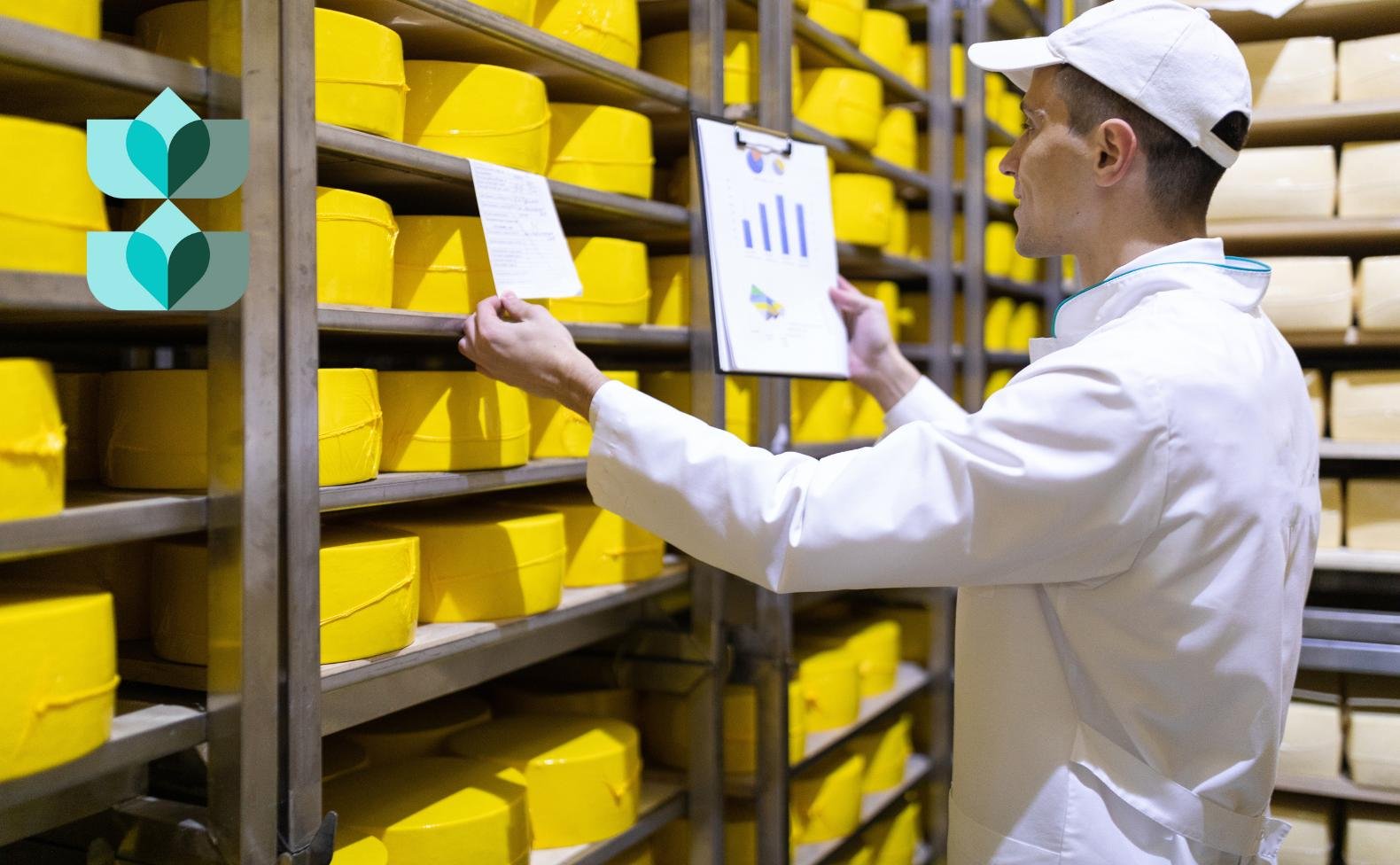A perpetual inventory system is a sophisticated method of managing inventory that leverages advanced technology, including computer programs, software, and digital devices. These tools—such as barcode scanners used in warehouses and point-of-sale (POS) systems in retail locations—facilitate real-time tracking, recording, and updating of inventory transactions. The moment a transaction occurs, whether it's a sale, purchase, or return, the system immediately adjusts to reflect the new inventory levels. This real-time visibility is a major advantage, providing businesses with an accurate snapshot of their inventory at any given time, thereby enabling informed and timely decisions about reordering inventory, pricing, and sales.
In addition to providing real-time updates, a perpetual inventory system also maintains a comprehensive digital record of all transactions. This detailed paper trail is invaluable for auditing purposes and for understanding the flow of goods through the company. It also offers insight into potential areas for improvement in inventory management. Furthermore, the system can integrate with other business systems such as accounting software and warehouse management systems, ensuring accurate financial records and a seamless flow of information. This integration allows for more efficient handling and distribution of inventory. In essence, a perpetual inventory system is a powerful tool that uses technology to create a comprehensive, accurate, and integrated approach to managing a company's inventory.
What is a Perpetual Inventory System?
.jpg?width=1580&height=976&name=Copy%20of%20Copy%20of%20Copy%20of%20Process%20Manufacturing%20ERP%20(18).jpg)
A perpetual inventory system involves the use of computer programs, software, and digital devices, such as barcode scanners and point-of-sale (POS) terminals, to record and update inventory transactions as they occur. This ensures that inventory records are accurate and up-to-date, providing businesses with crucial information to make informed decisions.
Key Features of Perpetual Inventory Systems
-
Real-time updates
A perpetual inventory system records inventory transactions as they happen, resulting in an accurate and current view of stock levels.
-
Detailed paper trail
With every transaction recorded, it is easier to track and analyze the flow of inventory through a company, allowing for improvements in processes and better inventory management.
-
Integration with other systems
A perpetual inventory system can be connected to various other business systems, such as accounting software and warehouse management systems, for a seamless flow of information.
-
Reduced inventory investment
With accurate inventory records, businesses can minimize their investment in excess stock and reduce overall inventory costs.
-
Automation
Perpetual inventory systems often utilize automated technology for tracking, recording, and analyzing inventory movements. This not only increases the accuracy of the system, but also saves time and resources that could be spent on manual inventory management.
-
Inventory valuation
A perpetual inventory system constantly updates the inventory value, reflecting the cost of goods sold and the remaining inventory value in real time. This allows businesses to have more accurate financial reporting and analysis.
-
Minimization of stockouts and overstocks
With real-time tracking and automatic updates, a perpetual inventory system can help businesses avoid stockouts (running out of inventory) and overstocks (having too much inventory). This leads to improved customer satisfaction, less waste, and better financial management.
-
Increased efficiency
By providing detailed, real-time information about inventory levels and movements, a perpetual inventory system can help businesses streamline their operations, make more informed decisions, and improve overall efficiency.
-
Improved order fulfillment
Real-time updates about inventory levels can help businesses fulfill customer orders more effectively and efficiently. This can improve customer satisfaction and potentially lead to increased sales.
-
Enhanced forecasting
The detailed data collected by a perpetual inventory system can be used to enhance forecasting and demand planning. This can help businesses anticipate future sales and inventory needs, which can lead to better business planning and strategy.
Advantages of Perpetual Inventory Systems
.jpg?width=1580&height=976&name=Copy%20of%20Copy%20of%20Copy%20of%20Process%20Manufacturing%20ERP%20(19).jpg)
Real-time Inventory Tracking
One of the main benefits of a perpetual inventory system is its ability to track inventory levels in real-time. This ensures that businesses have an accurate view of their stock levels and can make informed decisions regarding purchasing and inventory management.
Detailed Paper Trail
A perpetual inventory system maintains a record of every inventory transaction, making it easier to identify and rectify any discrepancies or issues within the company. This can lead to improved procedures, better training, and increased accuracy in inventory management.
Reduced Inventory Investment
With a perpetual inventory system, businesses can rely on accurate and up-to-date inventory records to make informed decisions about purchasing and stock levels. This can lead to reduced investment in excess inventory and, consequently, lower storage and holding costs.
Integration with Other Systems
A significant advantage of a perpetual inventory system is its ability to integrate with other business systems, such as accounting and warehouse management systems. This allows for seamless information flow and improved efficiency across all aspects of a company's operations.
Improved Order Fulfillment
A perpetual inventory system can greatly enhance order fulfillment by providing real-time updates on inventory levels. This means businesses can respond more effectively and efficiently to customer orders, thereby improving customer satisfaction and potentially driving increased sales.
Increased Efficiency
The real-time tracking and automatic updates that come with a perpetual inventory system can significantly increase operational efficiency. By providing detailed, up-to-the-minute information about inventory levels and movements, businesses can streamline their operations, make more informed decisions, and improve overall efficiency.
Enhanced Forecasting
The detailed data collected by a perpetual inventory system can be used to enhance forecasting and demand planning. This can help businesses anticipate future sales and inventory needs, leading to better business planning, strategy, and potentially improved profitability.
Automated Inventory Management
A key advantage of a perpetual inventory system is the automation of inventory management processes. Through this system, manual tasks like counting inventory or updating records can be significantly reduced or even eliminated, thereby saving time and resources. This can also reduce human error, thereby improving the accuracy and reliability of inventory management.
Comparing Perpetual and Periodic Inventory Systems
-1.jpg?width=1580&height=976&name=Copy%20of%20Copy%20of%20Copy%20of%20Process%20Manufacturing%20ERP%20(5)-1.jpg)
While both perpetual and periodic inventory systems serve the purpose of tracking inventory, there are some key differences between the two:
-
Real-time updates
A perpetual inventory system continuously updates inventory records as transactions occur, while a periodic inventory system only updates records at specific intervals, such as weekly, monthly, or annually.
-
Accuracy
The perpetual inventory system tends to provide more accurate inventory records due to its real-time updates, while the periodic inventory system may have discrepancies between actual inventory levels and recorded levels due to the time gap between updates.
-
Inventory management
Perpetual inventory systems provide businesses with better inventory management capabilities, as they can make informed decisions based on accurate and current inventory information. In contrast, periodic inventory systems may require businesses to maintain buffer stocks or make estimations to account for potential discrepancies in inventory levels.
-
Cost
Implementing and maintaining a perpetual inventory system can be more costly than a periodic inventory system, mainly due to the need for advanced technology and software. However, the benefits of improved inventory management and reduced inventory investment may outweigh these initial costs for many businesses.
-
Paper Trail
Perpetual inventory systems maintain a comprehensive and detailed record of every inventory transaction. This digital paper trail can be invaluable for auditing purposes, identifying potential issues, and understanding the flow of goods through the business. On the other hand, periodic inventory systems may not provide as detailed a record of transactions, as updates are only made at certain intervals.
-
Integration with Other Systems
Perpetual inventory systems have the ability to integrate with other business systems, such as accounting software and warehouse management systems. This allows for seamless information flow and improved efficiency across all aspects of a company's operations. On the contrary, periodic inventory systems may not offer the same level of integration, potentially leading to siloed information and less efficient operations.
-
Order Fulfillment
With real-time updates on inventory levels, perpetual inventory systems can greatly enhance order fulfillment processes. Businesses can respond more effectively and efficiently to customer orders, thereby improving customer satisfaction. Periodic inventory systems, due to their less frequent updates, may not provide the same level of responsiveness to order fulfillment.
Overall, while both systems have their merits and applications, perpetual inventory systems offer a more detailed, accurate, and integrated approach to inventory management, albeit at a potentially higher cost. Periodic inventory systems, while simpler and less expensive, may not offer the same level of precision and real-time responsiveness. The choice between the two often depends on a company's specific needs, resources, and operational complexity.
Implementing a Perpetual Inventory System

Choosing Inventory Management Software
A crucial aspect of implementing a perpetual inventory system is selecting the right inventory management software. This software should be user-friendly, support real-time updates, and integrate with other business systems, such as accounting and warehouse management software.
Setting Up Inventory Tracking
To effectively implement a perpetual inventory system, businesses must set up a system for tracking inventory movements. This typically involves the use of barcode scanners, RFID tags, and POS terminals to record inventory transactions as they occur.
Establishing Inventory Control Policies
In addition to selecting software and setting up tracking systems, businesses must also establish clear inventory control policies to ensure the accuracy and effectiveness of their perpetual inventory system. These policies may include guidelines for recording transactions, handling damaged or lost inventory, and conducting regular physical inventory counts to ensure the accuracy of the perpetual system.
Training Employees
Finally, to successfully implement a perpetual inventory system, businesses must ensure that their employees are trained in using the software and following inventory control policies. This may involve providing training sessions, creating user manuals, or offering ongoing support to help employees adapt to the new system.
Conclusion

A perpetual inventory system provides several transformative advantages over traditional periodic systems. Its real-time tracking capability ensures businesses have a clear and accurate view of their inventory levels at any given time, enhancing decision-making efficiency. Coupled with meticulous record-keeping, businesses can create a detailed paper trail, serving as a valuable resource for auditing and identifying potential issues, thereby improving procedures and accuracy. Moreover, by providing precise inventory data, businesses can avoid overstocking and reduce associated storage and holding costs, leading to significant cost savings.
The system's interoperability allows for seamless integration with other business systems, promoting better coordination across various operational areas and eliminating information silos. While the transition to a perpetual inventory system may involve an upfront investment in technology and software, the long-term benefits of improved inventory management, cost savings, enhanced decision-making, and increased operational efficiency outweigh these initial costs. Thus, a perpetual inventory system stands as a compelling choice for businesses, signifying a strategic move towards leveraging technology for effective inventory management, a critical factor for businesses seeking growth, competitiveness, and sustainability in today's dynamic business landscape.
inecta's Food ERP solution is a robust recommendation for businesses interested in perpetual inventory systems. Its real-time tracking and cloud-based management make it an effective tool for inventory control, offering detailed visibility of business operations. The software's flexibility enables customizable tracking parameters for all incoming goods, aligning with the principles of a perpetual inventory system. It supports ingredient tracking, safety compliance, cost control, and efficient production planning. Moreover, inecta's robust after-sales service and user-friendly interface enhance its practicality for businesses. Thus, for companies seeking perpetual inventory management, inecta's Food ERP is a comprehensive, flexible, and user-friendly solution. Reach out to our team and book a demo today.











Free Valuable Resource!
3 simple steps to find your Food ERP
Free Valuable Resource!
3 simple steps to find your Food ERP
*We will never sell your information. Keeping your data and privacy secure is our highest concern.